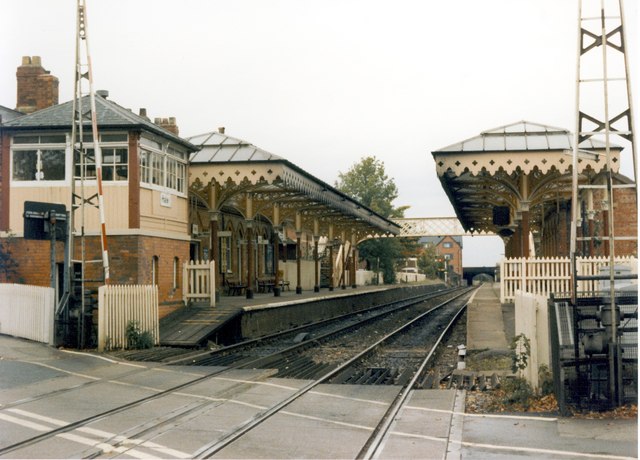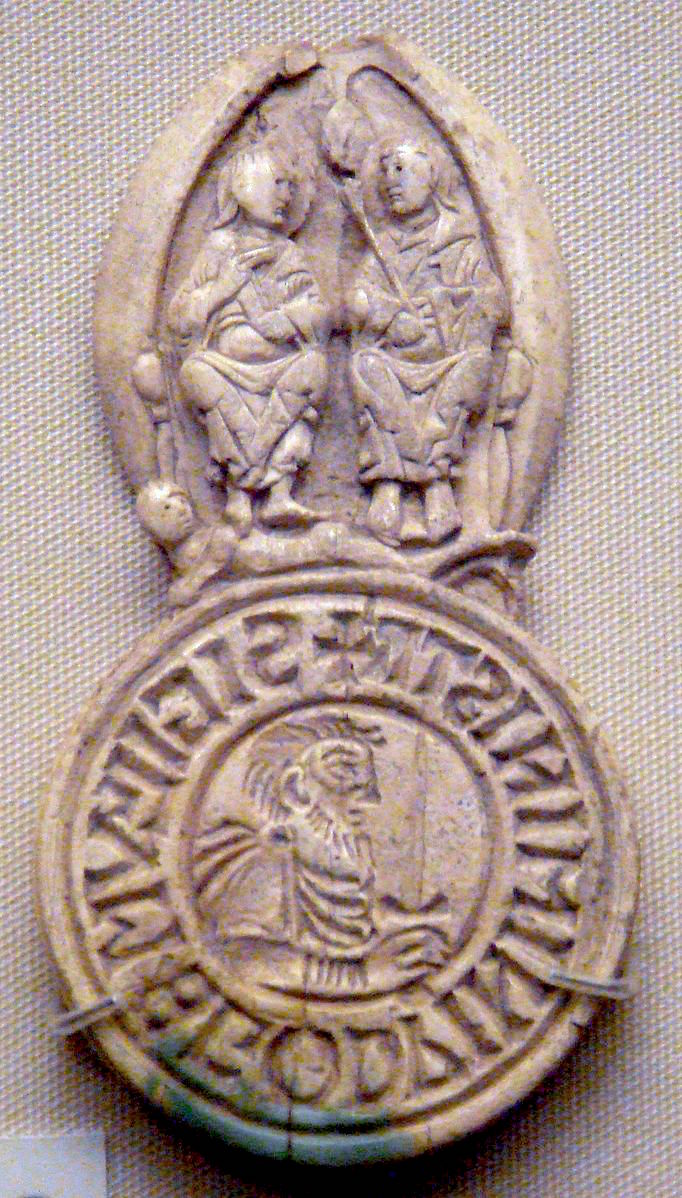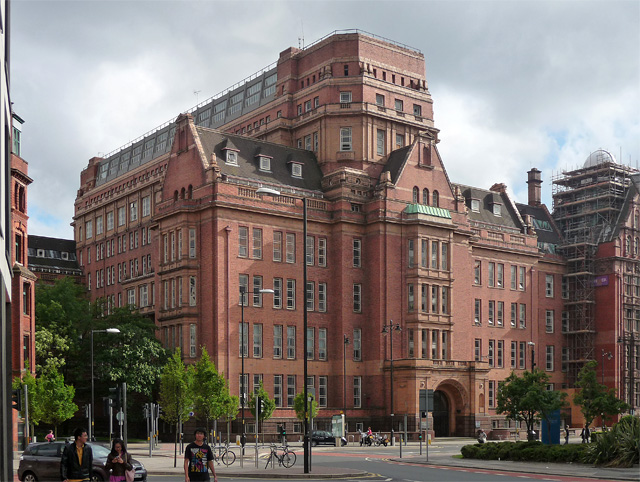|
Hamon De Massey
The first Hamon de Massey was the owner of the manors of Agden, Baguley, Bowdon, Dunham, Hale and Little Bollington after the Norman conquest of England (1066), taking over from the Saxon thegn Aelfward according to Domesday Book. He was possibly the son of Guillaume de Macé, born in La Ferté-Macé or Ferté de La Macé, a recently constructed fortress in Normandy. Hamon was made a baron by Hugh Lupus, by his right as Earl of Chester The Earldom of Chester () was one of the most powerful earldoms in medieval England, extending principally over the counties of Cheshire and Flintshire. Since 1301 the title has generally been granted to heirs apparent to the English throne, ..., from 1071.Thomas Christopher Banks, ''The Dormant and Extinct Baronage of England'' (1807:206): "6. Massey, or Dunham Massey" The name of Hamon de Massey was passed on to his descendants for several generations. There are several different ways of spelling the name, including "de Masci", "de ... [...More Info...] [...Related Items...] OR: [Wikipedia] [Google] [Baidu] |
Manorialism
Manorialism, also known as seigneurialism, the manor system or manorial system, was the method of land ownership (or "Land tenure, tenure") in parts of Europe, notably France and later England, during the Middle Ages. Its defining features included a large, sometimes fortified manor house in which the lord of the manor and his dependants lived and administered a rural estate, and a population of labourers or Serfdom, serfs who worked the surrounding land to support themselves and the lord. These labourers fulfilled their obligations with labour time or in-kind produce at first, and later by cash payment as commercial activity increased. Manorialism was part of the Feudalism, feudal system. Manorialism originated in the Roman villa system of the Late Roman Empire, and was widely practised in Middle Ages, medieval western Europe and parts of central Europe. An essential element of feudal society, manorialism was slowly replaced by the advent of a money-based market economy and new ... [...More Info...] [...Related Items...] OR: [Wikipedia] [Google] [Baidu] |
Agden, Cheshire East
Agden is a former civil parish, now in the parish of Little Bollington with Agden, in the borough of Cheshire East and the ceremonial county of Cheshire, England. It is near High Legh, and about south-west from Manchester City Centre. It is the site of Agden Hall. According to the 2001 census, the population of the civil parish was 146.2001 Census Details. Accessed 15-May-2007. Because the population is so small, it did not have a parish council, instead, relying on a |
Baguley
Baguley ( ) is an area and electoral ward of the city of Manchester, in Greater Manchester, England. The population at the 2011 census was 14,794. The name ''Baguley'' is derived from the Old English words ''bagga'' (badger, or possibly referring simply to any woodland or hill-inhabiting wild animal) and ''lēah'' (clearing or meadow). Historically in Cheshire Cheshire ( ) is a Ceremonial counties of England, ceremonial county in North West England. It is bordered by Merseyside to the north-west, Greater Manchester to the north-east, Derbyshire to the east, Staffordshire to the south-east, and Shrop ..., Baguley is mentioned in the Domesday Book of 1086. It was incorporated into Manchester in 1931. History Baguley is recorded in the Domesday Book with 1.5 ploughlands (one ploughland being the amount of land that can be ploughed by a team of eight oxen). In 1086, the tenants in chief were Gilbert (the hunter) and Hamon de Masci. The Barons de Masci also had control ov ... [...More Info...] [...Related Items...] OR: [Wikipedia] [Google] [Baidu] |
Bowdon, Greater Manchester
Bowdon is a suburb of Altrincham and electoral ward in the Metropolitan Borough of Trafford, Greater Manchester, England. It lies within the historic county boundaries of Cheshire, and became part of Greater Manchester in 1974. History The name Bowdon came from Anglo-Saxon ''Boga-dūn'' = "bow (weapon)-hill" or "curved hill". Bowdon and nearby Dunham Massey are both mentioned in the Domesday Book, citing the existence of a church and a mill in Bowdon, and Dunham Massey is identified as ''Doneham: Hamo de Mascy''. Both areas came under Hamo de Masci in Norman times. His base was a wooden castle at Dunham. Watch Hill Castle was built on the border between Bowdon and Dunham Massey between the Norman Conquest and the 13th century. The timber castle most likely belonged to Hamo de Mascy; the castle had fallen out of use by the 13th century.Watch Hill Castle by Norman Redhead in The last Hamo de Masci died in 1342. The Black Death came to the area in 1348. Before 1494, the r ... [...More Info...] [...Related Items...] OR: [Wikipedia] [Google] [Baidu] |
Dunham Massey
Dunham Massey is a civil parish in the Metropolitan Borough of Trafford, Greater Manchester, England. The parish includes the villages of Sinderland Green, Dunham Woodhouses and Dunham Town, along with Dunham Massey Hall and Park, formerly the home of the last Earl of Stamford and owned by the National Trust since 1976. Dunham Massey is in the historic county of Cheshire but, since 1974, it has been part of Trafford Metropolitan Borough; the nearest town is Altrincham. At the 2001 census, the parish had a population of 475. Dunham Massey's history is reflected in its 45 listed buildings. It was a regionally important place during the medieval period and the seat of the Massey barons. The Georgian mansion, with the remains of a castle on its grounds, is a popular tourist attraction. There are two Sites of Special Scientific Interest in Dunham Massey: Dunham Park, located south of Dunham Town, and Brookheys Covert. History The Roman road between Chester and York passing be ... [...More Info...] [...Related Items...] OR: [Wikipedia] [Google] [Baidu] |
Hale, Greater Manchester
Hale is a village and electoral ward within the Metropolitan Borough of Trafford, in Greater Manchester, England. It lies within the historic county boundaries of Cheshire, and became part of Greater Manchester in 1974. It lies about southwest of the city of Manchester, and is contiguous with the southeast of Altrincham. The population of the built up area as defined by the Office for National Statistics at the 2021 census was 16,715. History The toponym "Hale" derives from the Old English ''halh'', meaning a nook or shelter, as supported by the surrounding area that has natural features that provide shelter. The name Hale occurs in a number of places throughout Britain. The oldest record of Hale is in the Domesday Book of 1086. However, what little evidence there is – in the form of etymology and a few surviving records of events in the area – points to Saxons settling the area in the 7th century. The Domesday Book records that in the reign of Edward the Confessor in t ... [...More Info...] [...Related Items...] OR: [Wikipedia] [Google] [Baidu] |
Little Bollington
Little Bollington is a village and former civil parish, now in the parish of Little Bollington with Agden, in the Cheshire East district, in the ceremonial county of Cheshire, England. The Bridgewater Canal runs through the western side and Dunham Park lies to the north east. The village is west of Altrincham, near the boundary with Greater Manchester, which here follows the River Bollin. At the 2011 census the parish has a population of 170. In place of a parish council, administration took place via a parish meeting. History At Fairy Brow in Little Bollington, there is evidence of Bronze Age activity. An archaeological dig by South Trafford Archaeological Group in 1983 uncovered an oval Bronze Age burial pit. In the burial were (unurned) cremated remains of an adult male; the remains were radio carbon dated to 3435 (+/-35) bp. A tanged copper alloy knife dated 2000-1500 BC was with the cremated remains. According to the Domesday survey in 1086, the manor of Little Bol ... [...More Info...] [...Related Items...] OR: [Wikipedia] [Google] [Baidu] |
Norman Conquest Of England
The Norman Conquest (or the Conquest) was the 11th-century invasion and occupation of England by an army made up of thousands of Normans, Norman, French people, French, Flemish people, Flemish, and Bretons, Breton troops, all led by the Duke of Normandy, later styled William the Conqueror. William's claim to the English throne derived from his familial relationship with the childless Anglo-Saxon king Edward the Confessor, who may have encouraged William's hopes for the throne. Edward died in January 1066 and was succeeded by his brother-in-law Harold Godwinson. The Norwegian king Harald Hardrada invaded northern England in September 1066 and was victorious at the Battle of Fulford on 20 September, but Godwinson's army defeated and killed Hardrada at the Battle of Stamford Bridge on 25 September. Three days later on 28 September, William's invasion force of thousands of men and hundreds of ships landed at Pevensey in Sussex in southern England. Harold marched south to oppose ... [...More Info...] [...Related Items...] OR: [Wikipedia] [Google] [Baidu] |
Thegn
In later Anglo-Saxon England, a thegn or thane (Latin minister) was an aristocrat who ranked at the third level in lay society, below the king and ealdormen. He had to be a substantial landowner. Thanage refers to the tenure by which lands were held by a thane as well as the rank; an approximately equivalent modern title may be that of baron. The term ''thane'' was also used in Early Middle Ages, early medieval Scandinavia for a class of retainers, and ''thane (Scotland), thane'' was a title given to local royal officials in medieval eastern Scotland, equivalent in rank to the child of an earl. Etymology ''Thegn'' is only used once in the laws before the reign of King Æthelstan (924–939), but more frequently in charters. Apparently unconnected to the German language, German and Dutch language, Dutch word '' '' ('to serve'), H. M. Chadwick suggests "the sense of subordination must have been inherent... from the earliest time". It gradually expanded in meaning and use, to ... [...More Info...] [...Related Items...] OR: [Wikipedia] [Google] [Baidu] |
Domesday Book
Domesday Book ( ; the Middle English spelling of "Doomsday Book") is a manuscript record of the Great Survey of much of England and parts of Wales completed in 1086 at the behest of William the Conqueror. The manuscript was originally known by the Latin name , meaning "Book of Winchester, Hampshire, Winchester", where it was originally kept in the royal treasury. The ''Anglo-Saxon Chronicle'' states that in 1085 the king sent his agents to survey every shire in England, to list his holdings and dues owed to him. Written in Medieval Latin, it was Scribal abbreviation, highly abbreviated and included some vernacular native terms without Latin equivalents. The survey's main purpose was to record the annual value of every piece of landed property to its lord, and the resources in land, labour force, and livestock from which the value derived. The name "Domesday Book" came into use in the 12th century. Richard FitzNeal wrote in the ( 1179) that the book was so called because its de ... [...More Info...] [...Related Items...] OR: [Wikipedia] [Google] [Baidu] |
Manchester University
The University of Manchester is a public university, public research university in Manchester, England. The main campus is south of Manchester city centre, Manchester City Centre on Wilmslow Road, Oxford Road. The University of Manchester is considered a red brick university, a product of the civic university movement of the late 19th century. The current University of Manchester was formed in 2004 following the merger of the University of Manchester Institute of Science and Technology (UMIST) and the Victoria University of Manchester. This followed a century of the two institutions working closely with one another. Additionally, the university owns and operates major cultural assets such as the Manchester Museum, The Whitworth art gallery, the John Rylands Library, the Tabley House, Tabley House Collection and the Jodrell Bank Observatory – a UNESCO World Heritage Site. The University of Manchester Institute of Science and Technology had its origins in the Manchester Mechan ... [...More Info...] [...Related Items...] OR: [Wikipedia] [Google] [Baidu] |
La Ferté-Macé
LA most frequently refers to Los Angeles, the second most populous city in the United States of America. La, LA, or L.A. may also refer to: Arts and entertainment Music * La (musical note), or A, the sixth note *"L.A.", a song by Elliott Smith on ''Figure 8'' (album) * ''L.A.'' (EP), by Teddy Thompson *'' L.A. (Light Album)'', a Beach Boys album * "L.A." (Neil Young song), 1973 *The La's, an English rock band *L.A. Reid, a prominent music producer * Yung L.A., a rapper *Lady A, an American country music trio * "L.A." (Amy Macdonald song), 2007 *"La", a song by Australian-Israeli singer-songwriter Old Man River *''La'', a Les Gordon album Other media * l(a, a poem by E. E. Cummings * La (Tarzan), fictional queen of the lost city of Opar (Tarzan) *'' Lá'', later known as Lá Nua, an Irish language newspaper * La7, an Italian television channel *LucasArts, an American video game developer and publisher * Liber Annuus, academic journal Business, organizations, and government ... [...More Info...] [...Related Items...] OR: [Wikipedia] [Google] [Baidu] |





